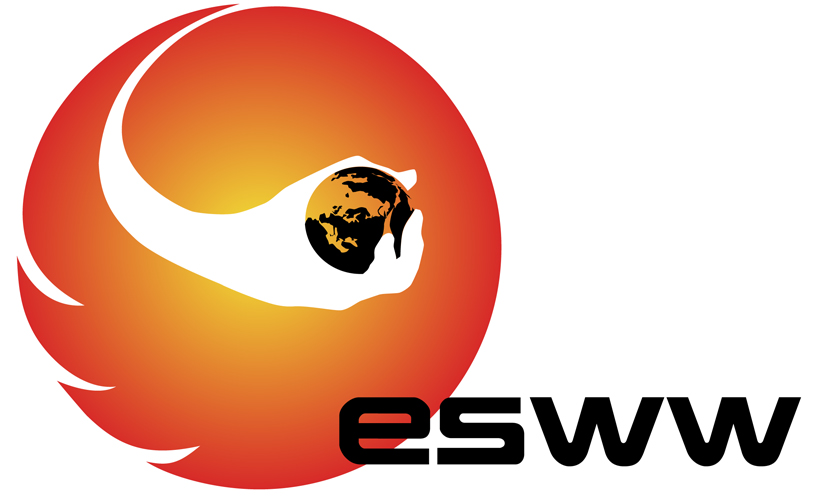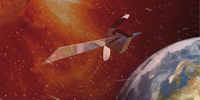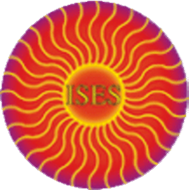
15-19 November, 2010 - Brugge, Belgium
Posters session 1
SSA Space Weather in Support of European Critical Infrastructure
| Session: | Poster session 1 (11) |
| Type: | Poster presentation |
| Date: | Wednesday, November 17, 2010 |
| Time: | 16:30 - 18:30 |
| Chair: | |
| Co-chair: | |
| Remarks: |
| Seq | Time | Title | Abs No | ||||
| 1 | 00:00 |
Next-Generation Space-Borne Instrumentation for Space-Weather monitoring and Forecast
Rodmann, Jens; Daly, Eamonn; Drolshagen, Gerhard; Hilgers, Alain; Jiggens, Piers; Menicucci, Alessandra; Nieminen, Petteri; Rodgers, David; Santin, Giovanni ESA/ESTEC, NETHERLANDS Most quantities needed for space-weather monitoring and forecast can be only measured from space. Depending on the type of measurement and timeliness considerations, specific locations are required. The European Space Agency is actively conducting several feasibility studies of and developments for advanced space-weather instrumentation through its various R&D programmes. We will give an overview of ongoing activities. Finally, gaps in the measurement infrastructure will be addressed. New technologies for sensors and detectors as well as the use of previously unexplored locations (e.g. L5, L3) might help to close these gaps. A few examples on some current ideas will be given. |
|||||
| 2 | 00:00 |
CINEMA/TRIO: A Three-Spacecraft Space Weather CubeSat Mission
Horbury, Timothy1; Brown, Patrick1; Eastwood, Jonathan1; Lin, Robert2; Immel, Thomas2; Glaser, David2; Lee, Dong-Hun3; Seon, Jongho3; Jin, Ho3 1Imperial College London, UNITED KINGDOM; 2Space Science Lab, UC Berkeley, UNITED STATES; 3School of Space Research, Kyung Hee University, Yongin, REPUBLIC OF KOREA CINEMA/TRIO (CubeSat for Ions, Neutrals, Electrons and Magnetic fields) is a mission of three identical CubeSats in high inclination low Earth orbits, carrying two instruments: a suprathermal electron, ion and neutral sensor (STEIN) and a magnetometer from Imperial College (MAGIC). The spacecraft will provide multi-point measurements of near -Earth space including: stereoscopic energetic neutral atom imaging of the ring current with 1keV energy resolution; direct measurement of ion precipitation in the auroral regions including pitch angle distributions, from just a few keV; full energy characterisation of electron microbursts; and high cadence measurements of magnetospheric waves and transients. The multi-point magnetic field measurements of CINEMA/TRIO will be an ideal test bed for space weather effects on data from ESA's upcoming SWARM mission. The mission is a collaboration of UC Berkeley, Kyung Hee University and Imperial College London and has received funding from the US National Science Foundation and Korea's World Class University programme; the first spacecraft is expected to launch in late 2011. |
|||||
| 3 | 00:00 |
EISCAT_3D: Development of a large Near-Earth Space monitoring System in Europe
Ulich, Thomas Sodankyla Geophysical Observatory, FINLAND EISCAT_3D will be Europe's next-generation radar for studies of the high-latitude atmosphere and geospace, with capabilities going beyond anything currently available. The facility will consist of large phased arrays in three countries. Depending on funding, EISCAT_3D will comprise tens of thousands, up to more than 100,000 antenna elements. The EISCAT_3D design combines capabilities for volumetric imaging and tracking and aperture synthesis imaging, with improved sensitivity and transmitter flexibility. A minimum of five sites is envisaged, with receivers located around 120 km and 250 km from the active site, providing optimal geometry for vectors in the middle and upper atmosphere. An active site comprising 16,000 elements will exceed the sensitivity of the present VHF radar by an order of magnitude. In autumn 2009, a multi-national consortium made an application funding of a Preparatory Phase Project for large-scale infrastructures on the ESFRI Roadmap within the 7th Framework Programme. At the time of the 7th European Space Weather Week, this project entitled "EISCAT_3D: A European Three-Dimensional Imaging Radar for Atmospheric and Geospace Research" has commenced and is in its second month. In addition, funding in excess of 1 MEUR has been granted on national level in Finland for crucial development work related to EISCAT_3D. This funding will be used to build a VHF test site in Kilpisjarvi in summer 2011. The poster presented here will summarise the development thus far and outline the plans for the development towards building this exciting new facility. We invite all interested parties to get in touch now and express their interests and indeed their requirements for this facility now, so that they can be taken into account by the planning team. |
|||||
| 4 | 00:00 |
Effects of geomagnetic disturbances on Oktyabrskaya railway in Russia
Sakharov, Yaroslav1; Katkalov, Yury2; Kudryashova, Nataly2; Danilin, Arkadij3; Shabalin, Anatoliy4; Pirjola, Risto5; Viljanen, Ari5 1Polar Geophysical Institute, RUSSIAN FEDERATION; 2Polar Geophysical Institure, RUSSIAN FEDERATION; 3Kola Sceince Center RAS, RUSSIAN FEDERATION; 4Oktyabrskaya railway, RUSSIAN FEDERATION; 5Finnish Meteorological Institute, FINLAND
Possible relationship of anomalies in the operation of railway (RW)
automatic systems with geomagnetic disturbances has been investigated
at the Oktyabrskaya railway running from St. Petersburg to Murmansk,
Russia. |
|||||







